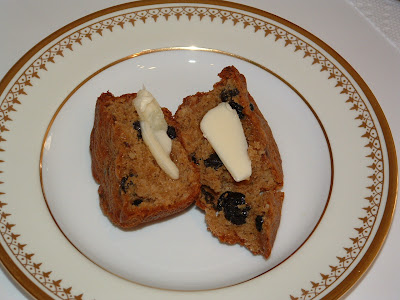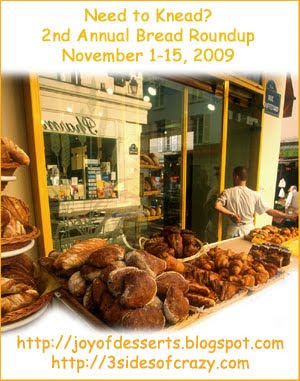
 Greetings! Here’s another YOU Can Cook That post when it should be I can Cook that. BTW, hi again, Dave here from MY YEAR ON THE GRILL. The resident cook in training. Today, I am addressing only one blogger out there (but I suspect there are other bloggers who have not baked a loaf of bread on their own). So this post is directed at Lea Ann of MANGOS CHILI and Z. However it is dedicated to all those “want to be” bread bakers out there.
Greetings! Here’s another YOU Can Cook That post when it should be I can Cook that. BTW, hi again, Dave here from MY YEAR ON THE GRILL. The resident cook in training. Today, I am addressing only one blogger out there (but I suspect there are other bloggers who have not baked a loaf of bread on their own). So this post is directed at Lea Ann of MANGOS CHILI and Z. However it is dedicated to all those “want to be” bread bakers out there.
Now, on my own site, I joke that I am a master baker. Truth is, I have about a dozen loafs of bread under my belt, several trays of rolls and I regularly make hamburger buns, but I am far from a master baker. But, as I have said before, whenever I tackle a project, I do a great deal of research. So what I lack in actual experience, I make up for in book learnin’. I think I can help Lea Ann with her bread baking issues.
Her first issue is that her loafs were chunk hard. In her words, a brick.
You see, she recently was gifted a Kitchenaid mixer. WHOO WHOO! what a great gift! HOWEVER, it has a flaw. The flaw is that Lea Ann believed it’s hype. While it is great for mixing, and with the “dough hook”, it advertises itself as doing the kneading for you; in my opinion, I am going to guess that the kitchenaid over kneaded the dough. Too much kneading will cause the bread to be too hard. So, one suggestion, let the dough mix in the kitchenaid, but do the kneading by hand.
Next, she suggests that the dough does not rise.
OK, a couple of solutions. First, are you premixing the yeast in water. Just a little so that it is dissolved does the trick. And, if you are (as you should), be sure that the water is only luke warm. Just a shade above skin temperature, but not uncomfortably warm. Pee warm if you will (but don’t ask me how I know how warm pee is). If the water is too warm, the yeast will die and nothing will rise. Book says about 105 degrees, but no more than 110.
But yeast dough does rise best in a warm area. I keep the heat turned down in the house while my wife is away at her inconvenient day job. So, I need to find the warmest spot in the house to set my dough in while it is rising. Especially on cold days, I like to preheat my oven while my bread rises, and I set the rising dough on top of the stove. With the dough covered, this is by far the warmest spot, and I always get a great rise out of the dough. OR, you can just let the dough rise longer. Dough will rise in a refrigerator if you leave it long enough. Just because the recipe says to let it rise an hour does not mean it will hurt to let it rise three hours.
Another suggestion for Lea Ann is to do a second rise. That is, to do the initial rise, take the dough and hit it hard with a fist. the dough will partially collapse again. then, form the dough into the final product (a dome, a loaf or rope… or whatever). Place the dough on the baking surface, and return to that warm spot and allow to rise again. This second rise will be the one that adds bubbles and tenderness inside the loaf (making it soft).
And finally, to get a more crisp crust, that seals in moisture, take a cup of ice and dump that into the bottom of your stove as the bread is baking (at the beginning of the bake only). The steam will help to seal the crust faster and keep the moisture inside the loaf.
OK, as I promised Lea Ann, I have a wonderful no fail recipe for bread. When hunting for a “standard” bread recipe, I asked for a bit of advice from my favorite blog buddy, Mary from ONE PERFECT BITE. I was a bit surprised when she explained that she does not have a recipe of her own, but uses one from another blogger. Surprised until I found the site of said blogger. These are the famous Moomie’s Buns (I dream of having someone name buns after me one day, but I digress). If you google “Moomie Buns”, you will find about 212,000 links. I initially blogged this on my own site when I made Hamburger buns. Now that I am posting here, you can count at least 212,002. Click HERE to get to my post on hamburger buns.
So, Here’s my Moomie recipe…
 � 1 c water
� 1 c water
� 2 tbsp butter or margarine
� 1 egg
� 3 1/4 c. flour
� 1/4 c. sugar
� 1 tsp salt
� 3 tsp instant yeast
 � Place all ingredients in your bread machine. Select dough. Allow to run cycle.
� Place all ingredients in your bread machine. Select dough. Allow to run cycle.
Now, I have heard that Lea Ann does not have a bread machine. when I learned that, I had already made my loafs for this post. But, it is easy to do what a bread machine does on the “dough cycle”. Just add all the ingredients together in you kitchenaid bowl. Mix until it just forms a ball. Do not over mix.
Then, knead the dough into a ball shape, coat with a bit of oil and allow to rise for at least an hour, until it has doubled in size.
Punch the ball and allow it to collapse a bit (this is all a bread machine does on “dough cycle”).
 � Dump out onto lightly floured surface. form into bread shape, or cut and form into bun shape. Place on greased cookie sheets or your bun pans, cover; rise about 30 to 40 minutes. Bake in preheated 375 degree oven for 12 to 15 minutes til golden. Cool on wire racks.
� Dump out onto lightly floured surface. form into bread shape, or cut and form into bun shape. Place on greased cookie sheets or your bun pans, cover; rise about 30 to 40 minutes. Bake in preheated 375 degree oven for 12 to 15 minutes til golden. Cool on wire racks.
I cut them into two loaf size, a little on the flat size, I was going to make Cajun Po’Boy sandwiches, so wanted that size.
OK, in the spirit of the original recipe, i made a few additions…
 I added…
I added…
1 teaspoon of Garlic Powder
1 teaspoon of onion powder
and for an extra kick,
1/2 teaspoon of red pepper flakes!
This recipe is wonderfully adaptable. Add fresh herbs, a little cheese or what have you, and it should work fine. I never make the same loaf twice.
 I also brushed the bread with some melted butter prior to baking and sprinkled some onion and garlic flakes on top of the loafs.
I also brushed the bread with some melted butter prior to baking and sprinkled some onion and garlic flakes on top of the loafs.
I bake bread on a cookie sheet, on parchment paper. Works great for me.
 I wanted to include a picture of the ice cubes in the bottom of my oven as the bread was first going into the preheated oven.
I wanted to include a picture of the ice cubes in the bottom of my oven as the bread was first going into the preheated oven.
It sounds so odd, but it does work to have some steam in the oven.
 Lea Ann… You can do this, this recipe, this process has never failed me. There is something primal in making your own bread, knowing what you want to do with it and shaping it accordingly. Once you have some success, you will go crazy as a baker. ALMOST as satisfying as cooking over live fire… but just almost.
Lea Ann… You can do this, this recipe, this process has never failed me. There is something primal in making your own bread, knowing what you want to do with it and shaping it accordingly. Once you have some success, you will go crazy as a baker. ALMOST as satisfying as cooking over live fire… but just almost.
 And look what I CAN COOK…
And look what I CAN COOK…
Shrimp Po’Boys, and plantain fries…
Come take a look at my site today for the Plantain recipe. and I will post the Po’Boy recipe tomorrow on my site…
See you all next Thursday!
Dave here from MY YEAR ON THE GRILL.
And if anyone else has any suggestions for Lea Ann, drop her a comment here!
































